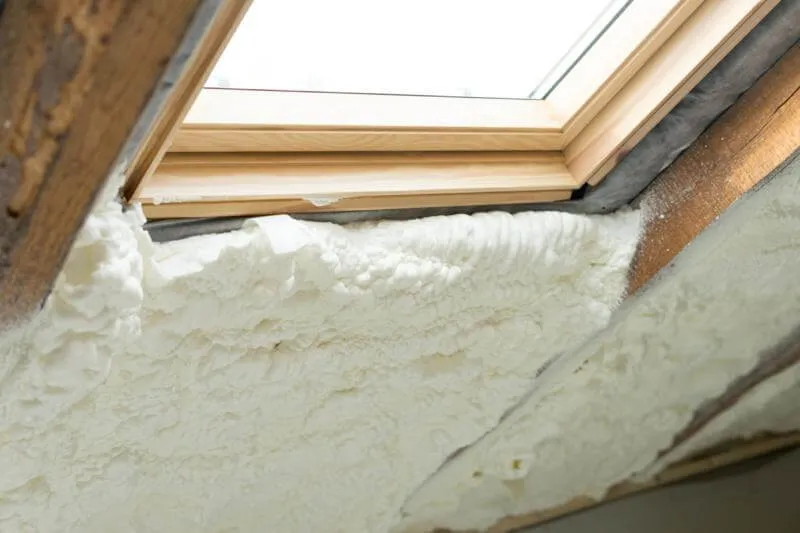Great Stuff foam is a widely used expanding polyurethane foam designed for sealing gaps, insulating surfaces, and improving energy efficiency. It is commonly utilized in both residential and commercial applications to reduce air leakage and enhance thermal insulation. However, despite its versatility and effectiveness, there are situations where using Great Stuff foam is not recommended. Misuse of this product can lead to safety hazards, structural damage, and ineffective results.
Understanding these limitations is essential for ensuring proper insulation and preventing costly mistakes. This article outlines specific scenarios where Great Stuff foam should not be used, explains why these applications are problematic and suggests alternative solutions for better results.
Situations Where Great Stuff Foam Should Not Be Used
Around Electrical Boxes
Great Stuff foam expands as it cures, which can create pressure inside enclosed spaces. When used around electrical boxes or wiring, this expansion can compress wires and connections, potentially leading to short circuits or fire hazards. Additionally, cured foam is not electrically conductive, but it can still trap heat, increasing the risk of overheating electrical components.
Alternative Solution
For insulating electrical boxes, it is recommended to use fire-rated expanding foam or non-expanding foam sealants that do not exert pressure on wiring and allow sufficient airflow to prevent overheating.
In Enclosed Spaces Without Ventilation
Proper curing of polyurethane foam requires exposure to moisture in the air. If applied in a completely enclosed space, the foam may not cure properly, remaining soft and unstable. This can lead to ineffective sealing, as the foam may deteriorate over time, compromising insulation efficiency and structural integrity.
Alternative Solution
For confined spaces, consider using alternative insulation materials such as mineral wool, fiberglass batts, or closed-cell spray foam that does not require exposure to air for curing.
On Moving Parts or Mechanisms
Expanding foam hardens into a rigid structure once cured. Applying it to areas with moving parts, such as doors, windows, or mechanical joints, can cause significant operational issues. The foam can obstruct movement, leading to damage and reducing the functionality of doors and windows.
Alternative Solution
For insulating around doors and windows, low-expansion foam specifically designed for these applications should be used. This ensures a secure seal without causing operational difficulties.
In High-Heat or Fire-Prone Areas
Polyurethane foam is highly flammable and should not be used near open flames, furnaces, water heaters, or heat-producing appliances. Exposure to high temperatures can cause the foam to break down, releasing harmful chemicals and increasing the risk of fire hazards.
Alternative Solution
For insulation near heat sources, fire-resistant insulation materials such as mineral wool, fire-rated spray foam, or intumescent coatings should be used to ensure safety and durability.
As a Load-Bearing Material
Great Stuff foam is not designed to support weight or bear structural loads. Using it as a filler for large gaps in load-bearing areas can result in unstable and weak surfaces, potentially leading to structural failure.
Alternative Solution
For load-bearing applications, structural-grade materials such as wood, concrete, or engineered insulation products like rigid foam boards should be used instead of expanding foam.
On Surfaces That Require Flexibility
Some materials, such as vinyl siding and wooden structures, expand and contract due to temperature fluctuations. Since Great Stuff foam hardens upon curing, it does not accommodate movement, which can lead to cracks, separation, and damage over time.
Alternative Solution
Flexible insulation materials, such as silicone-based sealants or elastomeric caulks, should be used for applications requiring movement accommodation.
In Areas Exposed to UV Light
Prolonged exposure to ultraviolet (UV) light degrades polyurethane foam, causing it to become brittle and deteriorate. This makes it unsuitable for outdoor applications where direct sunlight is present.
Alternative Solution
For exterior insulation, UV-resistant coatings or materials like closed-cell spray foam with protective coverings should be used to ensure longevity.
Where Pest Resistance Is Needed
Great Stuff foam is not pest-resistant, and rodents or insects may chew through it, compromising the seal and insulation. This makes it unsuitable for areas prone to pest infestation, such as basements, crawl spaces, and attics.
Alternative Solution
Pest-resistant insulation materials, such as steel wool, copper mesh, or spray foam with pest deterrent additives, should be used for these applications.
Alternative Solutions for Specific Applications
Fire-Resistant Foam
For insulation around heat-producing appliances and fire-prone areas, fire-rated spray foam is a safer option compared to standard polyurethane foam.
Low-Expanding Foam
To prevent excessive pressure on enclosed spaces, low-expanding foam is recommended for insulating around windows, doors, and delicate areas.
Silicone or Caulk-Based Sealants
For applications requiring flexibility, silicone-based or elastomeric caulks provide durable and adaptable sealing solutions.
Rigid Foam Boards
For load-bearing or structural insulation needs, rigid foam boards offer superior support and longevity.
Conclusion
Great Stuff foam is an effective insulation material, but it is not suitable for every application. Improper use can lead to fire hazards, structural damage, or ineffective sealing. Understanding these limitations helps homeowners and professionals make informed decisions when selecting insulation solutions.
For expert guidance on the best insulation options in Fresno, CA, consulting an experienced professional is highly recommended.
Contact Fresno Spray Foam Insulation Masters
For high-quality insulation solutions in Fresno, CA, contact Fresno Spray Foam Insulation Masters for expert advice and professional installation services.




